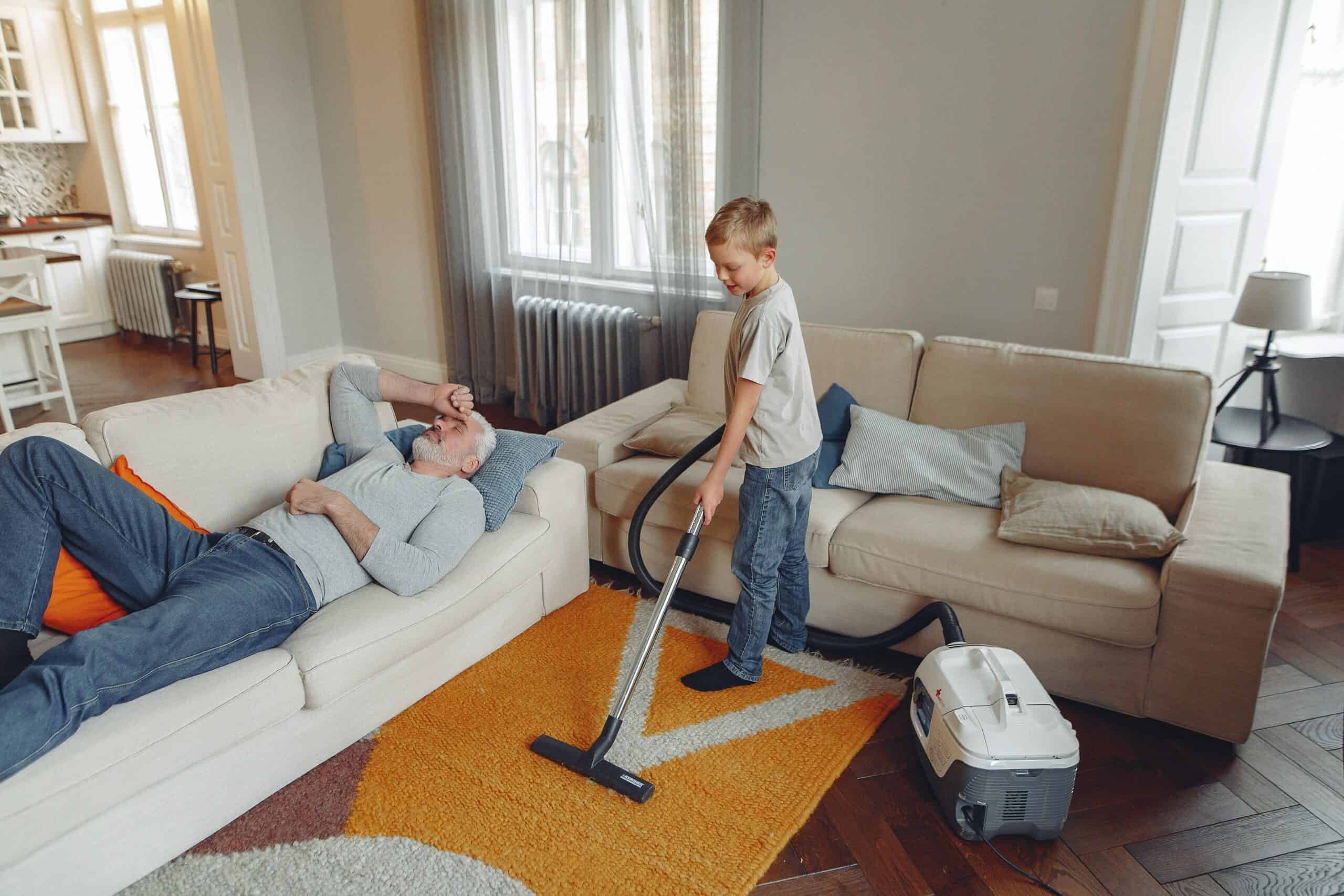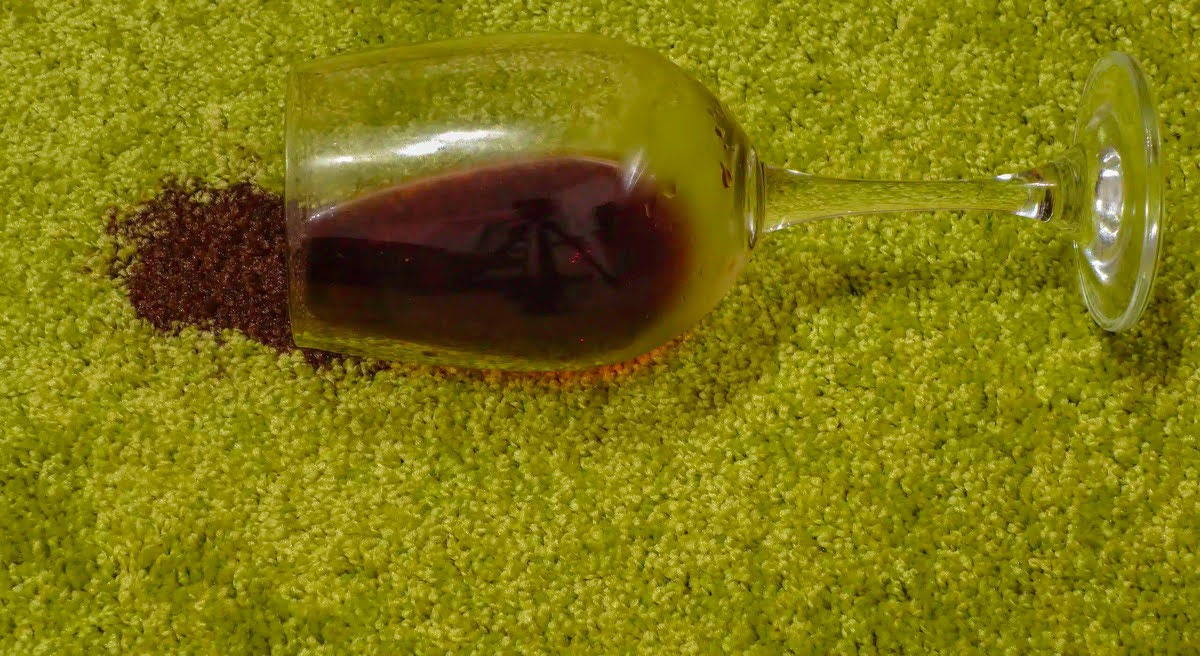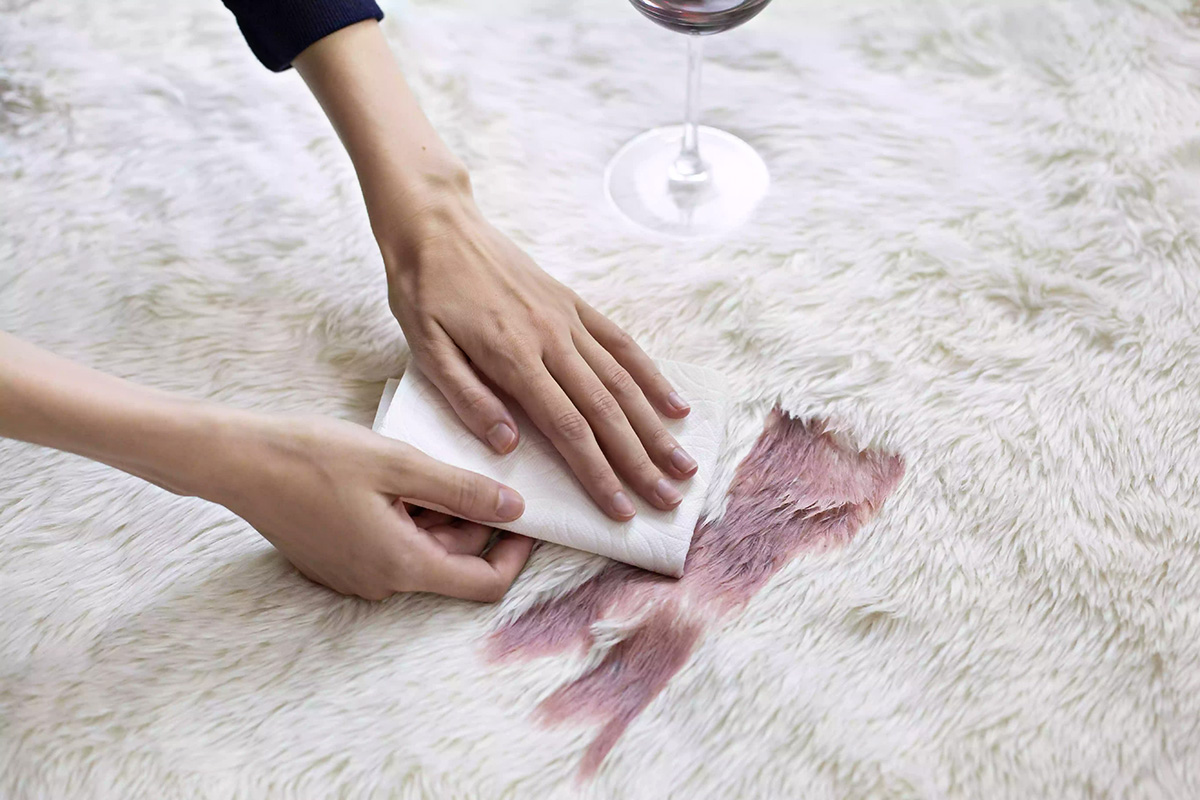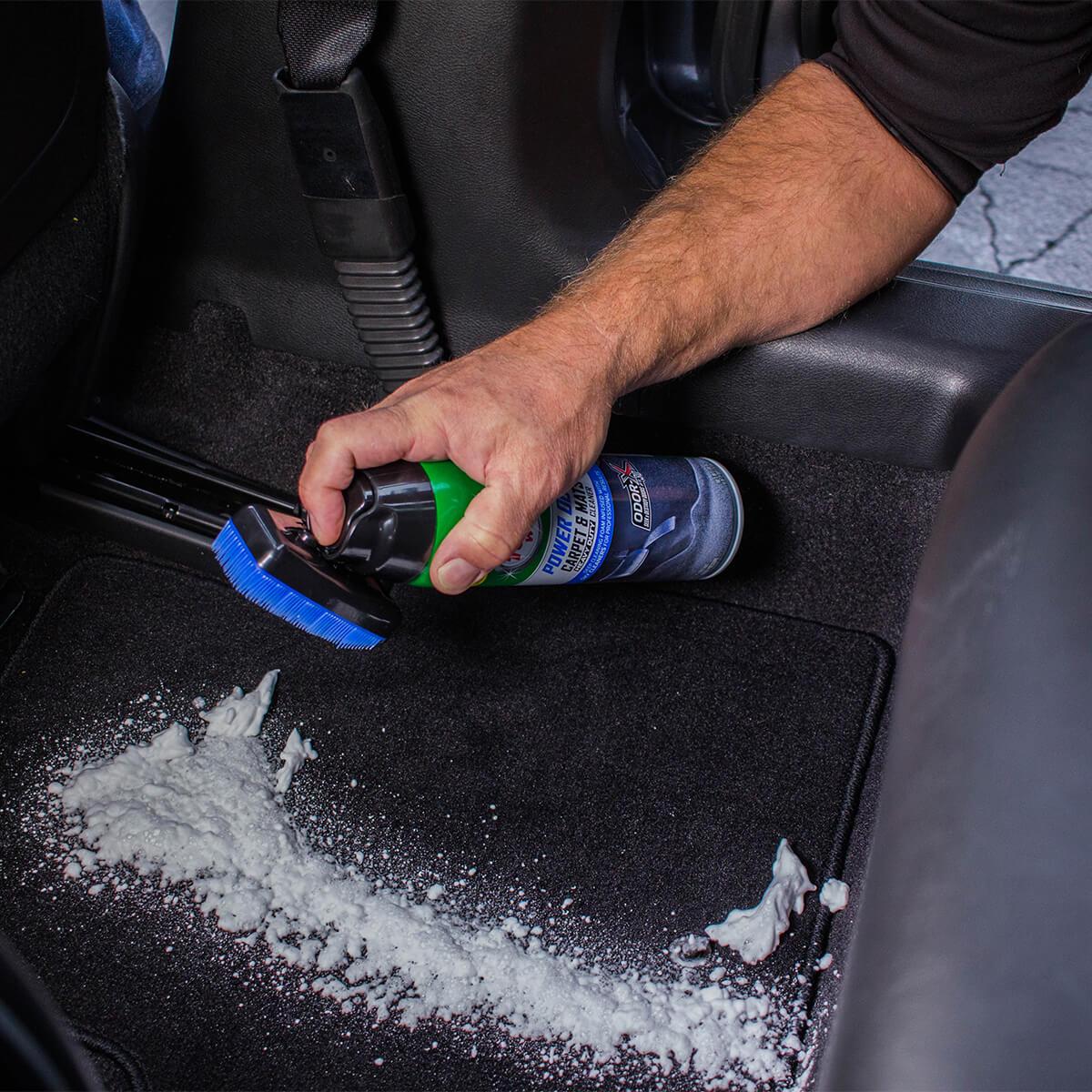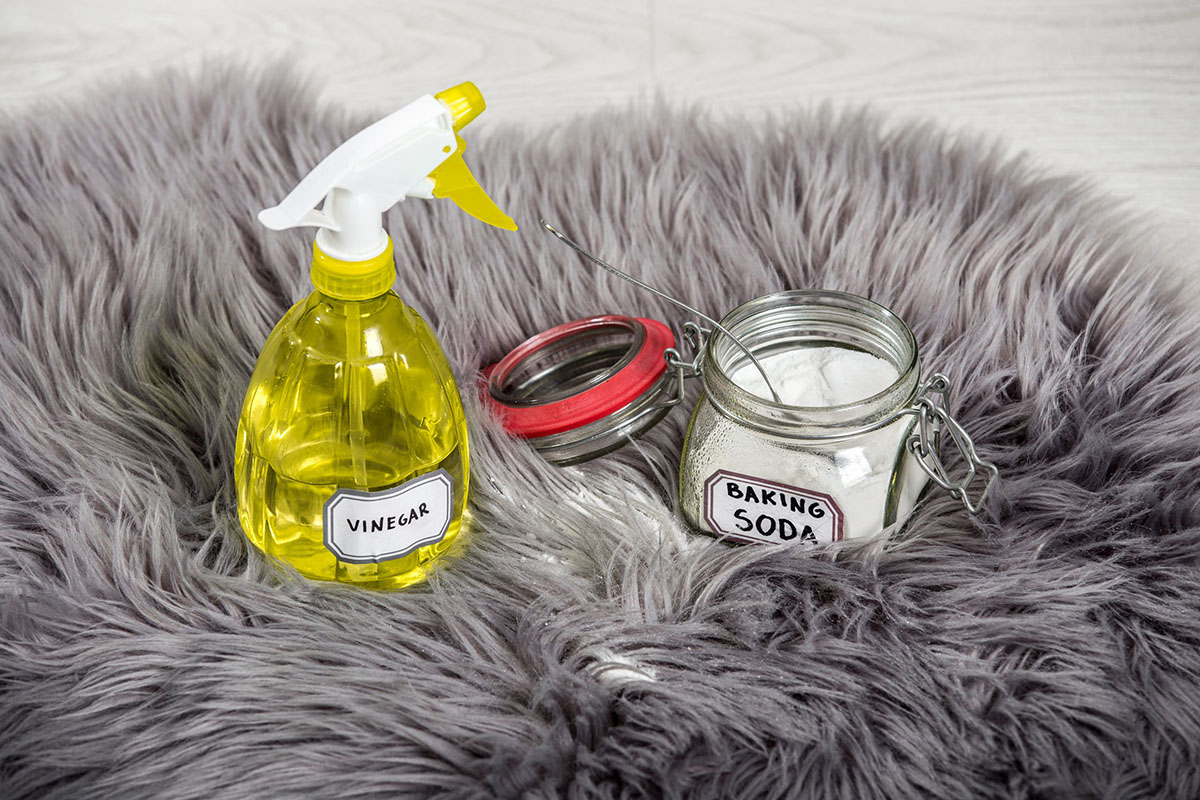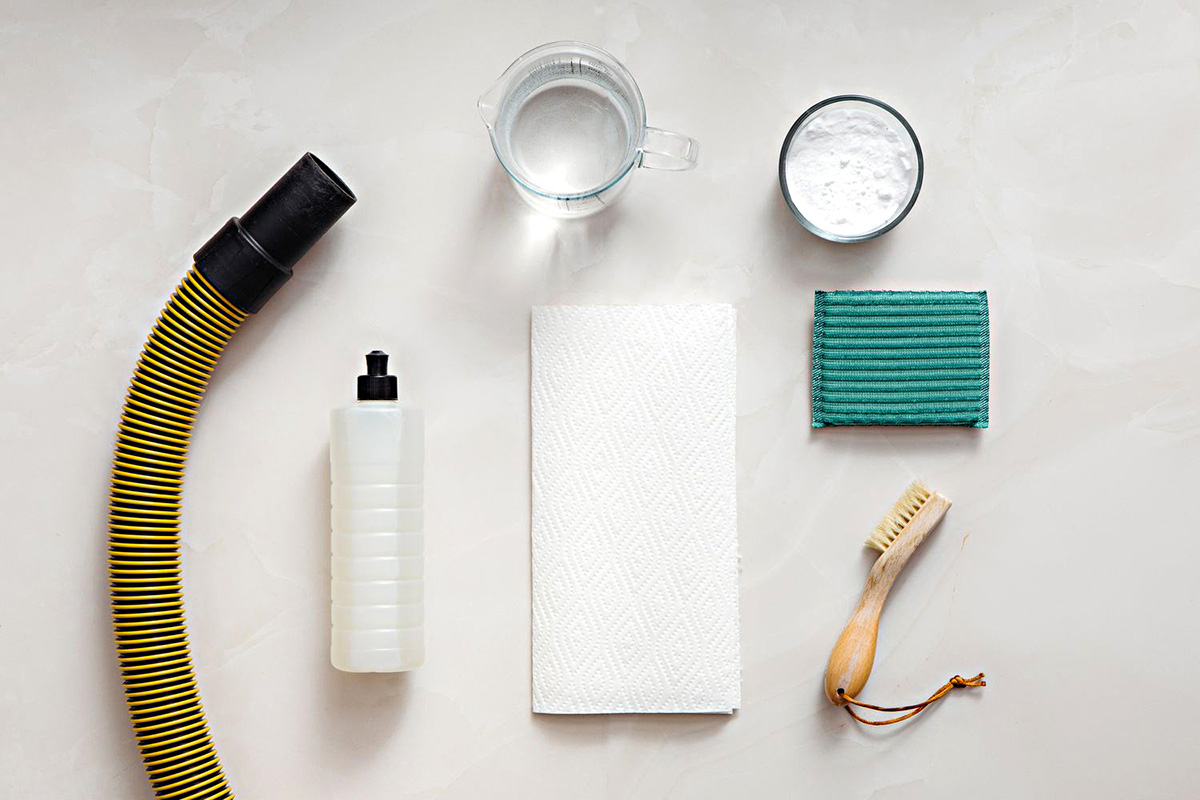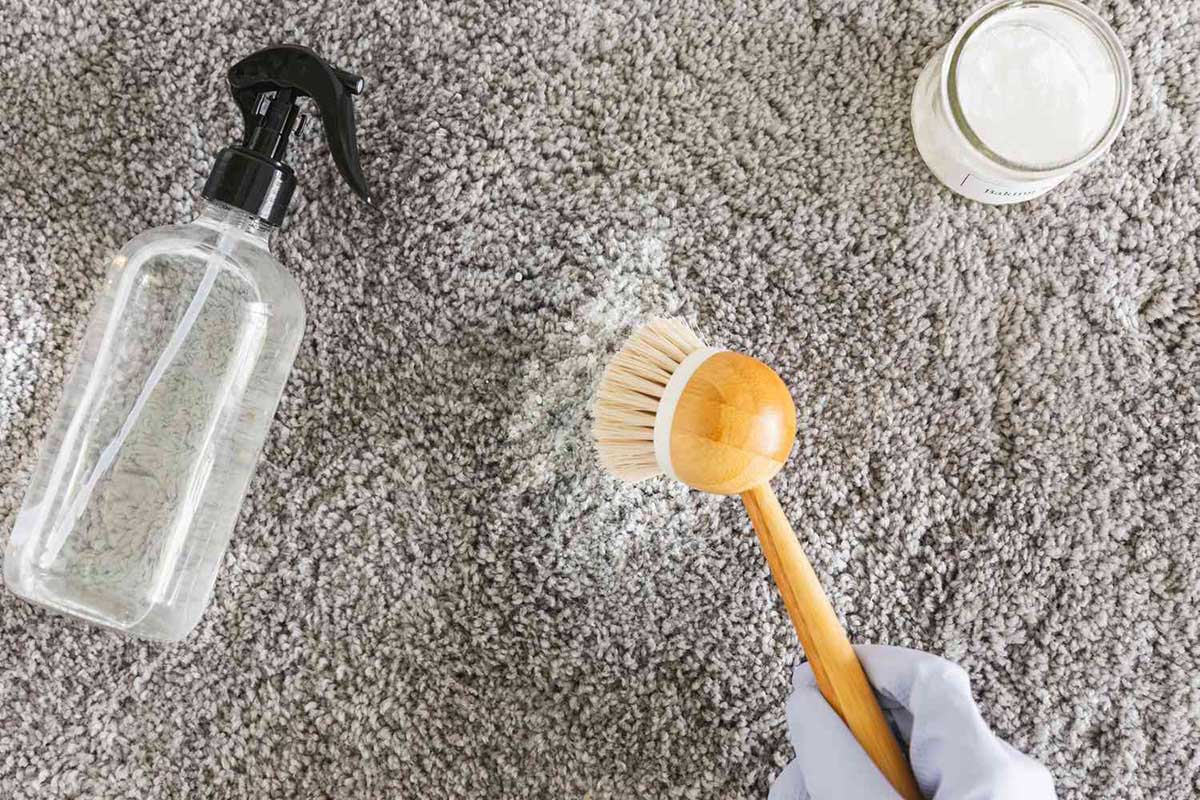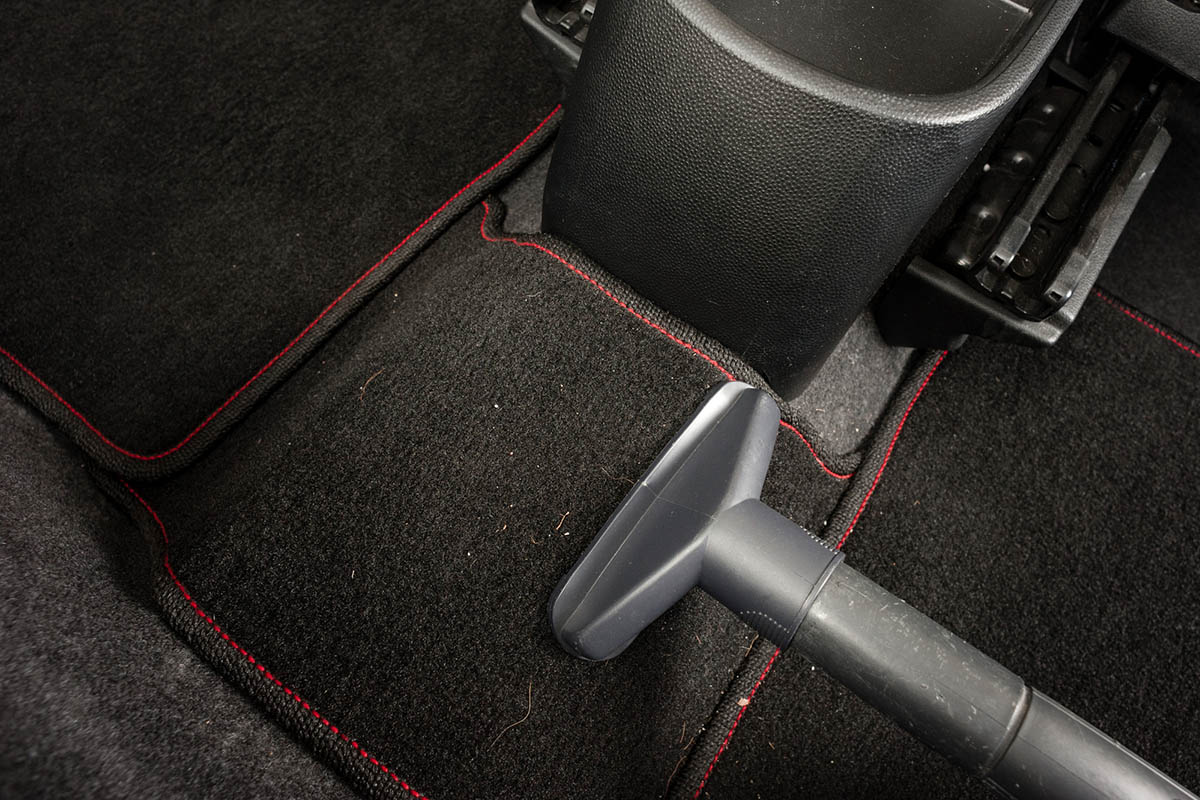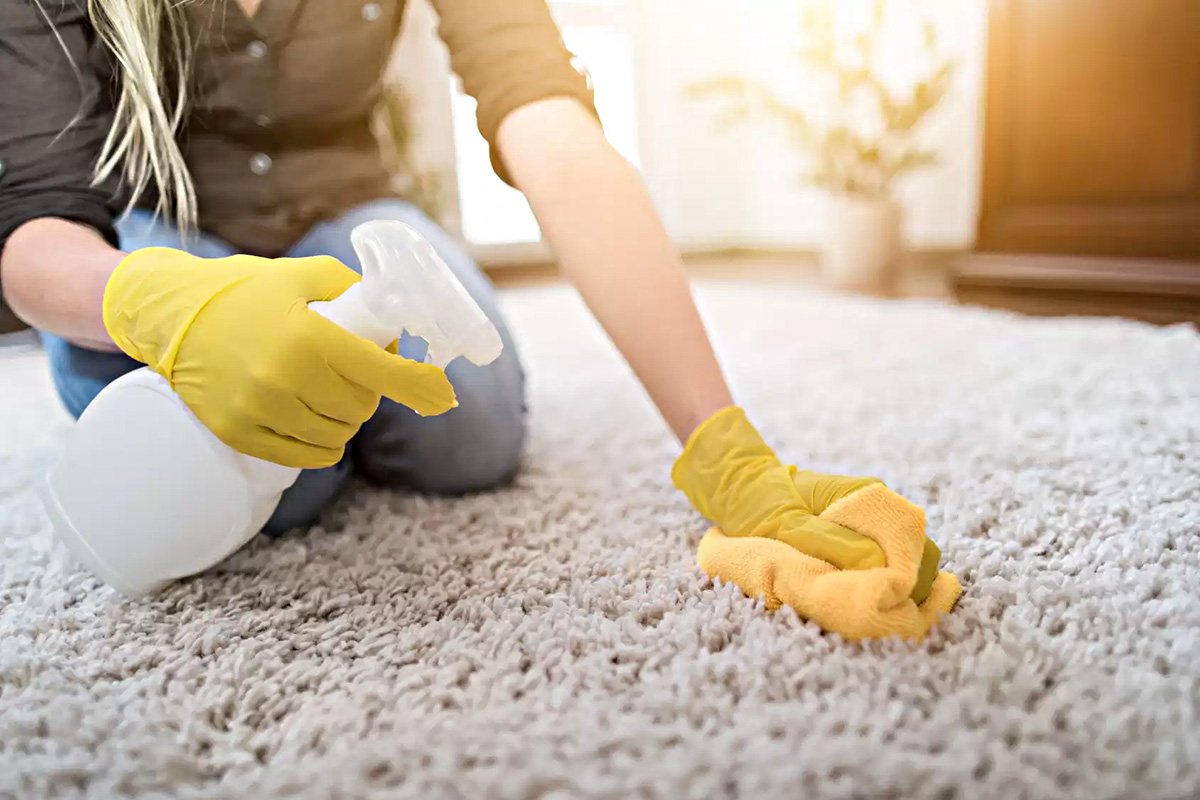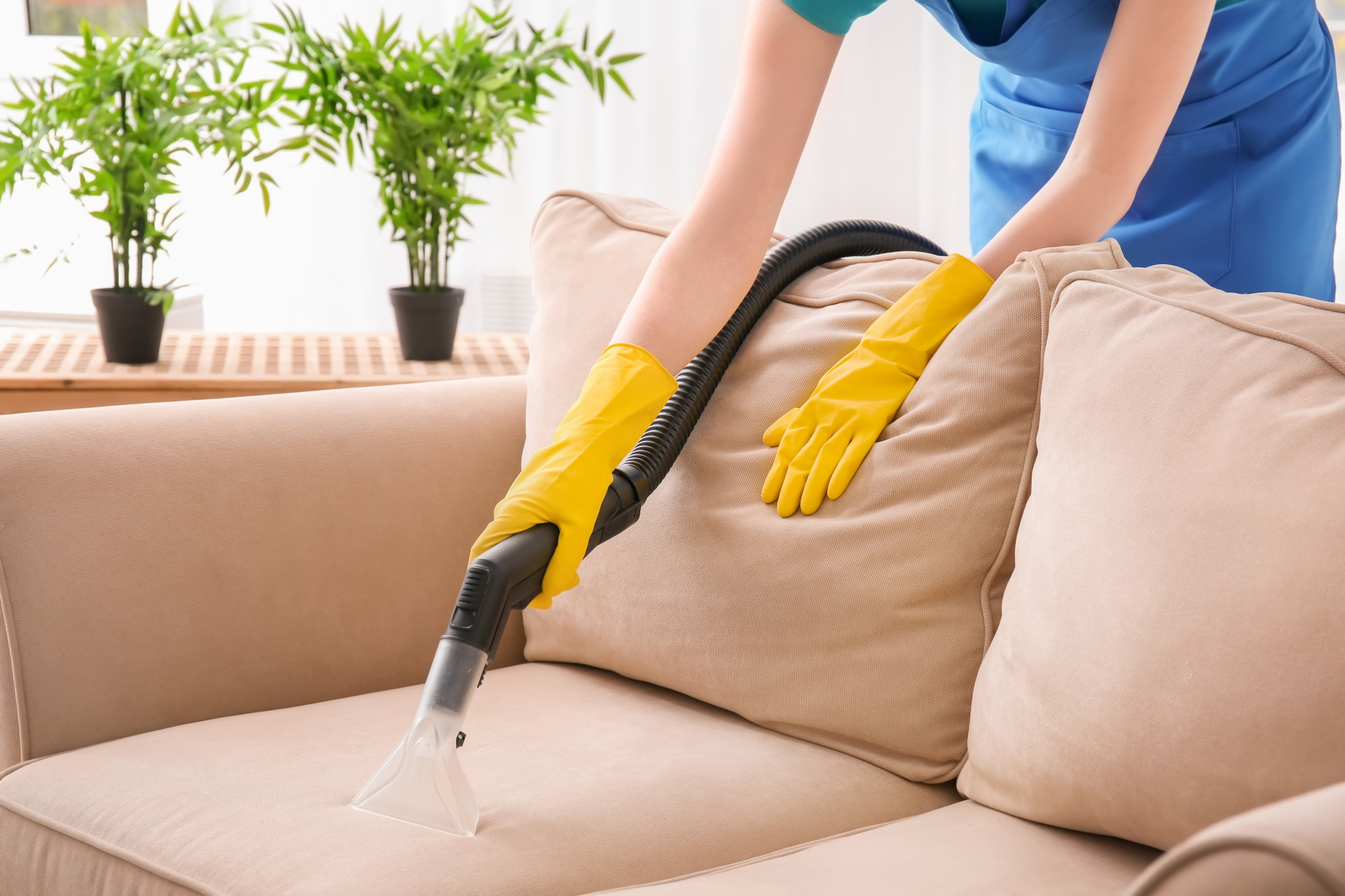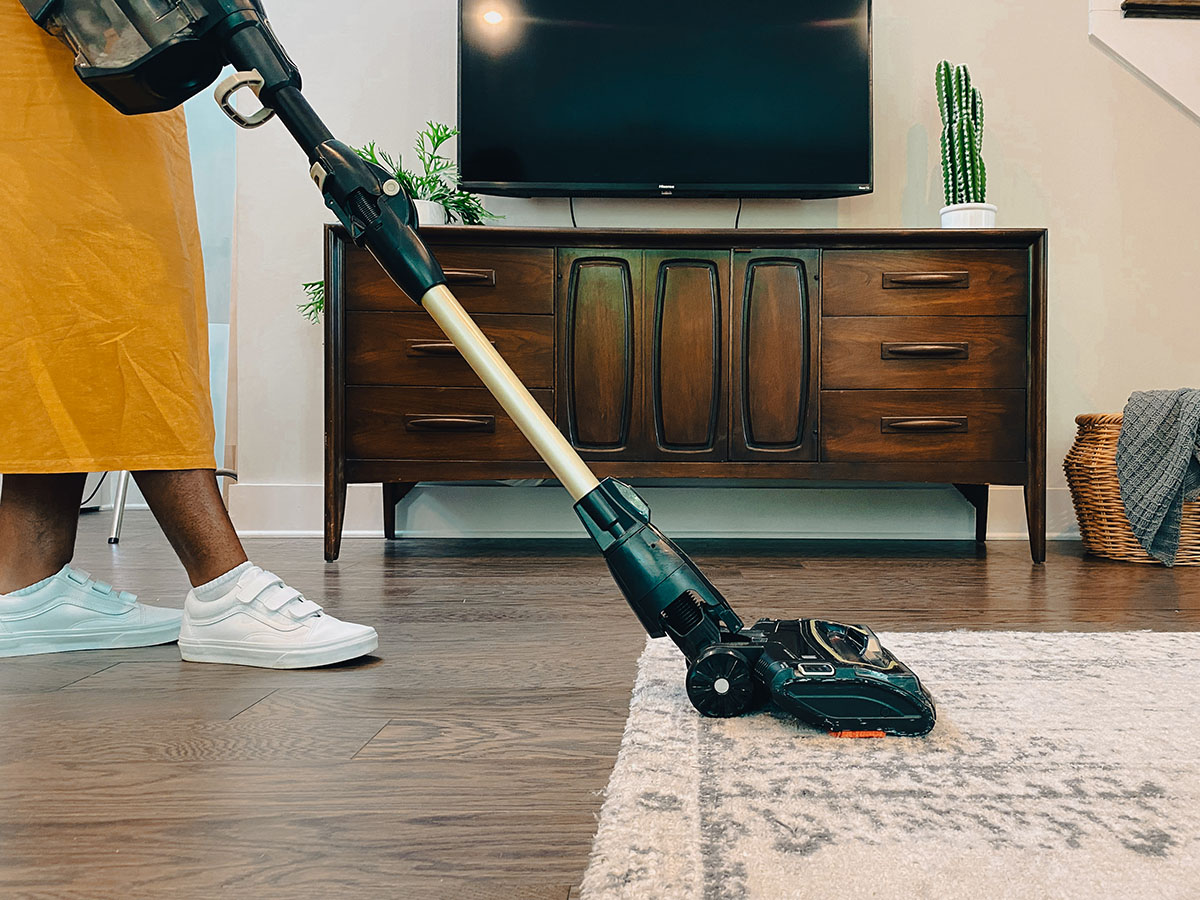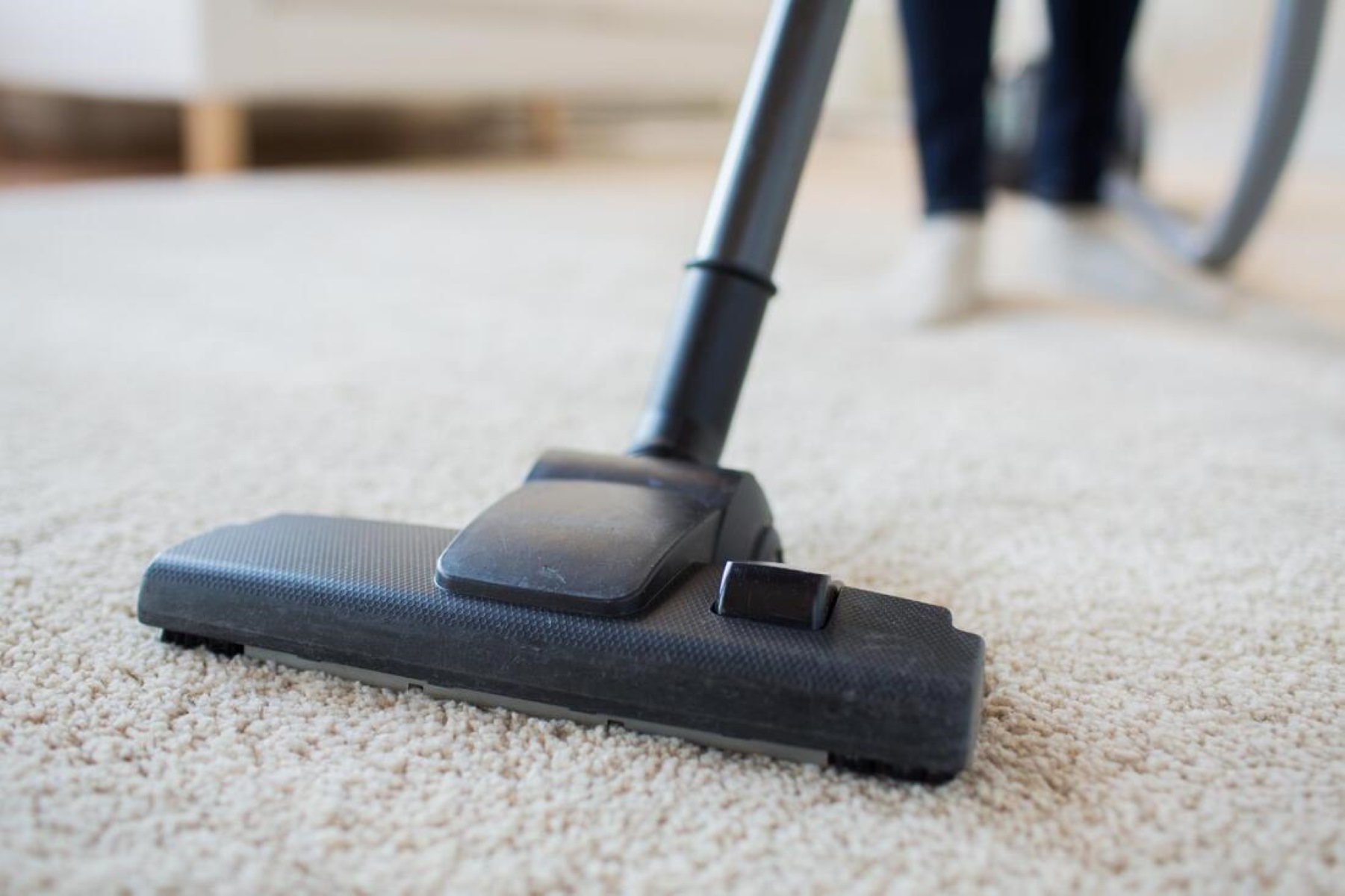

Articles
How To Take Smell Out Of A Carpet
Modified: October 20, 2024
Learn effective techniques to remove unpleasant smells from your carpet with these insightful articles. Banish odors and breathe fresh air in your home again!
(Many of the links in this article redirect to a specific reviewed product. Your purchase of these products through affiliate links helps to generate commission for Storables.com, at no extra cost. Learn more)
Introduction
Having a carpet in your home is a cozy and comfortable addition to any room. However, over time, carpets can absorb and retain unpleasant odors from various sources, such as pets, spills, or general everyday use. These odors can linger and become increasingly noticeable, making it essential to address them to maintain a fresh and clean living environment.
In this article, we will guide you through effective steps to take the smell out of a carpet and restore its freshness. Whether you’re dealing with pet odors, food spills, or other unpleasant smells, these methods will help eliminate them and leave your carpet smelling clean and inviting.
From identifying the source of the odor to preventing future smells, we’ll cover everything you need to know to keep your carpet odor-free. So let’s dive in and learn how to tackle those pesky carpet odors.
Key Takeaways:
- Identifying the source of carpet odors and using natural solutions like baking soda and vinegar can effectively eliminate unpleasant smells, restoring freshness to your home without the need for harsh chemicals.
- Regular maintenance, including vacuuming, addressing spills promptly, and implementing preventive measures, is essential for preventing future odors and maintaining a clean, inviting carpet for years to come.
Read more: How To Take Dog Pee Smell Out Of A Carpet
Step 1: Identify the source of the odor
The first step in getting rid of carpet odor is to identify the source of the smell. This is crucial because different odors require different treatment methods. Here are some common sources of carpet odors:
- Pet accidents: If you have pets, there’s a chance that they may have had accidents on the carpet, leaving behind unpleasant smells.
- Food spills: Spilled food or beverages can seep into the carpet fibers, causing odors to develop over time.
- Mold or mildew: Excessive moisture or water damage can lead to mold or mildew growth, resulting in a musty smell.
- Cigarette smoke: If you or someone in your household smokes indoors, the smell can become embedded in the carpet fibers.
- Old age: Over time, carpets can accumulate general odors from regular use and the buildup of dirt and dust.
Once you’ve identified the source of the odor, it will be easier to choose the most appropriate method to eliminate it.
If you’re unsure about the source of the odor, start by conducting a thorough inspection of the carpet. Look for any visible stains, wet patches, or signs of mold or mildew. You can also use your sense of smell to get a better understanding of where the odor is most prominent.
If you have pets, use a UV flashlight to detect any hidden urine stains. These stains can be a significant contributor to unpleasant odors and may require targeted treatment.
By identifying the source of the odor, you’ll be able to move forward with the appropriate steps to effectively remove it and restore freshness to your carpet.
Step 2: Vacuum the carpet thoroughly
Before you start treating the odor, it’s essential to give your carpet a good, thorough vacuuming. Vacuuming helps to remove loose debris, dirt, and dust trapped in the carpet fibers, which can contribute to unpleasant smells.
Here’s how to properly vacuum your carpet:
- Start by clearing the area and removing any large objects or furniture from the carpet.
- Use a wide attachment or adjust the height of your vacuum cleaner to the appropriate setting for your carpet type.
- Vacuum the entire carpet, focusing on high-traffic areas, corners, and edges.
- Make multiple passes over each area to ensure you’re effectively removing as much dirt and debris as possible.
- If you’re dealing with pet hair, consider using a vacuum cleaner specifically designed for pet hair removal.
- After vacuuming, empty the dust canister or replace the vacuum bag to prevent any lingering odors from being reintroduced into the air.
Vacuuming not only helps to remove dirt and debris but also fluffs up the carpet fibers, improving its appearance. By starting with a clean and properly vacuumed carpet, you’ll create a better foundation for the subsequent odor treatment steps.
Remember to vacuum your carpets regularly, at least once a week, to maintain cleanliness and prevent odors from building up over time. Regular vacuuming is especially important if you have pets or if the carpet is subjected to heavy foot traffic.
Step 3: Sprinkle baking soda over the affected area
Baking soda is a simple and effective household ingredient that can help neutralize odors in your carpet. It works by absorbing and neutralizing the smells, leaving your carpet smelling fresh. Before you start treating the entire carpet, start by focusing on the affected area where the odor is most prominent.
Here’s how to use baking soda to tackle carpet odors:
- Start by clearing the area and removing any visible dirt or debris.
- Sprinkle a generous amount of baking soda over the affected area. You can use a spoon or a shaker bottle to evenly distribute the baking soda.
- Gently work the baking soda into the carpet fibers using a soft-bristle brush or your fingertips. This will help the baking soda penetrate and reach deep into the fibers.
- Leave the baking soda on the carpet for several hours, preferably overnight. This gives it enough time to absorb the odors effectively.
Baking soda is a safe and natural cleaning agent that poses no harm to humans or pets. It is known for its absorbent properties and its ability to eliminate odors. While the baking soda sits on the carpet, it will draw out the unpleasant smells, leaving your carpet fresh and clean.
If you’re dealing with a particularly stubborn odor, you can sprinkle additional baking soda and gently rub it into the carpet fibers. This will provide extra absorption and odor-fighting power.
Once the baking soda has had sufficient time to work its magic, move on to the next step to remove it from the carpet.
Step 4: Let the baking soda sit for several hours
After sprinkling baking soda over the affected area of your carpet, it’s important to allow it enough time to work its odor-absorbing magic. While the exact duration will depend on the severity of the odor, letting the baking soda sit for several hours or even overnight is recommended for optimal results.
During this time, the baking soda will penetrate the carpet fibers and begin to absorb the unpleasant odors. The longer you leave it, the more time the baking soda has to effectively neutralize the smells.
To ensure the best outcome, follow these steps:
- Clear the area around the treated carpet to prevent any accidental disruption or contact with the baking soda.
- Avoid walking on or placing any objects on the baking soda-covered area to allow it to work undisturbed.
- If possible, open windows or turn on fans to improve air circulation. This will help speed up the baking soda’s odor absorption process.
- If you’re treating an area with a particularly strong or stubborn odor, consider extending the sitting time to 24 hours.
Baking soda is a safe and non-toxic substance, so you don’t need to worry about any adverse effects on your carpet or your health. Plus, it’s an affordable and easily accessible solution for tackling carpet odors, making it a popular choice among homeowners.
Once the baking soda has had ample time to absorb the odors, move on to the next step to remove it from the carpet.
Read more: How To Get Ammonia Smell Out Of A Carpet
Step 5: Vacuum the baking soda
After allowing the baking soda to sit on your carpet for several hours and absorb the odors, it’s time to remove it using a vacuum cleaner. Vacuuming the baking soda will not only eliminate the absorbed smells but also leave your carpet looking clean and refreshed.
Follow these steps to effectively vacuum the baking soda:
- Attach a clean attachment or set your vacuum cleaner to the appropriate height for your carpet.
- Begin vacuuming the treated area, making sure to cover the entire surface thoroughly.
- Make multiple passes over the area, moving in different directions to ensure you pick up all the baking soda.
- Pay close attention to corners, edges, and hard-to-reach spots where baking soda may have settled.
- If you notice any remaining baking soda residue, use a soft-bristle brush or a clean cloth to gently scrub and loosen it.
- Empty the vacuum’s dust canister or replace the vacuum bag to prevent any odors from getting redistributed.
While vacuuming the baking soda, you may notice a slight improvement in the carpet’s smell. However, for more stubborn odors, additional steps may be necessary. If the odor persists, move on to the next steps to tackle more persistent smells and ensure your carpet is thoroughly clean and fresh.
Regularly vacuuming your carpet, even without the presence of odors, is crucial to maintain its cleanliness and freshness. Aim to vacuum at least once a week, or more frequently for high-traffic areas or households with pets.
Now that the baking soda has been removed, let’s explore additional steps to eliminate persistent odors from your carpet.
Step 6: Treat stubborn odors with vinegar
If you’re dealing with stubborn carpet odors that are resistant to baking soda alone, vinegar can be an effective solution. Vinegar has natural deodorizing properties and can help neutralize strong smells. It’s important to note that vinegar has a strong scent of its own, but it dissipates quickly, leaving your carpet odor-free.
Here’s how to use vinegar to tackle stubborn odors:
- Mix equal parts of white vinegar and water in a spray bottle. For example, one cup of vinegar and one cup of water.
- Spray the vinegar solution directly onto the affected area of your carpet.
- Use a clean cloth or a soft-bristle brush to gently scrub the vinegar solution into the carpet fibers.
- Allow the vinegar solution to sit on the carpet for 15-30 minutes, but do not let it dry.
- After the designated time, blot the area with a clean, dry cloth to absorb excess moisture and vinegar.
- Open windows or turn on fans to promote air circulation and accelerate the drying process.
Vinegar is an excellent choice for neutralizing many odors, including pet smells and cigarette smoke. However, it’s essential to spot test the vinegar solution in an inconspicuous area of your carpet before treating the entire affected area. This is to ensure that the vinegar does not cause any discoloration or damage to your carpet fibers.
If the stubborn odor persists, move on to the next step to address persistent smells and ensure your carpet is fresh and clean.
Note: Avoid using vinegar on natural fibers such as silk or wool, as it may cause damage. Consult the manufacturer’s recommendations or professional guidance if you are unsure about using vinegar on your specific carpet type.
Sprinkle baking soda on the carpet, let it sit for 15-20 minutes, then vacuum it up. Baking soda helps to absorb and neutralize odors.
Step 7: Use enzymatic cleaners for persistent smells
If you’re dealing with persistent and strong odors in your carpet, enzymatic cleaners can be a powerful solution. Enzymatic cleaners are specifically designed to break down organic compounds, such as pet urine, food spills, and other biological stains, that contribute to odors.
Here’s how to use enzymatic cleaners to address persistent smells:
- Choose an enzymatic cleaner that is suitable for the type of odor you’re dealing with. Ensure the cleaner is safe for use on your specific carpet material by checking the label or consulting the manufacturer’s instructions.
- Read and follow the instructions provided on the cleaner’s packaging. Different products may have varying application methods and recommended contact time.
- Apply the enzymatic cleaner directly to the affected area of the carpet. Use enough cleaner to thoroughly saturate the fibers.
- Gently work the cleaner into the carpet using a soft-bristle brush or a clean cloth. This will help ensure the cleaner reaches deep into the fibers and neutralizes the odor-causing compounds.
- Allow the enzymatic cleaner to sit on the carpet for the recommended duration. This can range from a few minutes to several hours, depending on the product.
- Blot the treated area with a clean, dry cloth to remove excess moisture and cleaner.
- Open windows or turn on fans to facilitate air circulation and accelerate the drying process.
Enzymatic cleaners work by breaking down the organic compounds at a molecular level, eliminating the source of odors rather than just masking them. These cleaners are particularly effective for pet-related odors as they target the enzymes found in urine, feces, and other pet-related stains.
It’s important to note that enzymatic cleaners may not completely eliminate very strong or deeply embedded odors in one application. In some cases, multiple treatments may be necessary to completely get rid of the odor. Follow the instructions provided by the manufacturer and be patient during the process.
This step is especially crucial for persistent odors that have not been effectively eliminated by previous methods. If the odor persists, move on to the next steps to ensure thorough cleaning and freshening of your carpet.
Step 8: Steam clean the carpet
Steam cleaning is an excellent method for deep cleaning and refreshing your carpet. It utilizes hot water and steam to penetrate the carpet fibers, extracting dirt, debris, and odors effectively. This step is particularly beneficial if you have not recently steam cleaned your carpet or if you’re dealing with stubborn odors that have not been eliminated by previous methods.
Follow these steps to steam clean your carpet:
- Start by clearing the area and removing any furniture or objects from the carpet.
- Read and follow the instructions on your steam cleaner to ensure safe and proper usage.
- Fill the reservoir of the steam cleaner with hot water according to the manufacturer’s recommendations.
- Add any recommended cleaning solution or carpet detergent to the water in the reservoir.
- Plug in the steam cleaner and allow it to heat up to the appropriate temperature.
- Thoroughly move the steam cleaner over the entire carpet, paying special attention to high-traffic areas and spots with lingering odors.
- Overlap each pass to ensure all areas of the carpet are properly cleaned.
- Allow the carpet to dry completely before walking on it or placing any furniture back in the room.
Steam cleaning is highly effective at removing deep-seated dirt, bacteria, and odors that may be trapped in your carpet fibers. The hot water and steam combination loosen and lift away any residues that contribute to unpleasant smells.
It’s worth noting that steam cleaning often requires specialized equipment. If you don’t own a steam cleaner, you may choose to rent one from a local hardware store or hire a professional carpet cleaning service.
Steam cleaning, when done periodically, can help maintain the cleanliness and freshness of your carpet while eliminating persistent odors.
Now that you’ve steam cleaned your carpet, it’s important to allow it to dry completely before moving on to the next step.
Read more: How To Get Dog Smell Out Of A Carpet
Step 9: Allow the carpet to dry completely
After steam cleaning or any other moisture-based carpet cleaning method, it’s crucial to allow the carpet to dry completely. Proper drying not only ensures the effectiveness of the cleaning process but also prevents the growth of mold or mildew, which can lead to unpleasant odors and damage to your carpet.
Follow these guidelines to ensure your carpet dries thoroughly:
- Open windows or turn on fans to promote air circulation in the room. This helps to speed up the drying process.
- Avoid walking on the carpet while it is still damp, as this can cause dirt and debris to become embedded in the fibers, potentially leading to new odors.
- Consider using dehumidifiers or placing absorbent towels or cloths on top of the damp areas to help absorb excess moisture.
- Allow sufficient time for the carpet to air dry. The time required for drying can vary depending on factors such as humidity levels, room temperature, and thickness of the carpet.
- If necessary, use a carpet fan or a cool hairdryer on a low setting to expedite the drying process. Ensure proper ventilation to prevent overheating.
- Check the carpet for signs of dampness, such as a cool or humid feeling, before walking on it or returning furniture to the room.
It’s important to be patient and not rush the drying process to ensure that your carpet is fully dry. Inadequate drying can lead to the growth of mildew or mold, which can cause persistent and unpleasant odors and damage to your carpet.
If you’re unsure about the complete drying of your carpet, it is advisable to seek professional guidance or use specialized drying equipment to ensure its thorough dryness.
Once your carpet is completely dry, you can proceed to the next step to add a final touch of freshness.
Step 10: Use carpet deodorizers or fresheners
After you have thoroughly cleaned and dried your carpet, you may want to enhance its freshness with the use of carpet deodorizers or fresheners. These products can provide an extra boost of pleasant fragrance, helping to eliminate any remaining subtle odors and leaving your carpet smelling inviting.
Here’s how to use carpet deodorizers or fresheners effectively:
- Choose a carpet deodorizer or freshener product that suits your preferences and is safe for use on your specific carpet material. Consider opting for natural or eco-friendly options if you prefer to avoid harsh chemicals.
- Follow the instructions provided on the packaging for the recommended usage amount. Most products will require you to sprinkle the deodorizer evenly over the carpet.
- Use a soft-bristle brush or broom to gently work the deodorizer into the carpet fibers. This helps to distribute the product and encourage better absorption.
- Allow the deodorizer to sit on the carpet for the recommended duration, usually around 10-15 minutes.
- Thoroughly vacuum the carpet to remove the deodorizer. Make sure to go over each area multiple times to pick up all the residue.
- Empty the vacuum’s dust canister or replace the vacuum bag to prevent any odors from being released back into the air.
Carpet deodorizers and fresheners come in various scents, allowing you to choose the fragrance that suits your preference and complements your home. Some products also have additional benefits, such as allergen reduction or stain protection.
Remember that excessive use of deodorizers or fresheners can overwhelm the senses or cause a buildup on your carpet, making it less effective. It’s best to use them occasionally or as needed, rather than as a regular cleaning routine.
Using carpet deodorizers or fresheners as a final step can help keep your carpet smelling fresh and pleasant after removing odors effectively. However, if you prefer a more natural approach, you can skip this step and proceed to the final step for ongoing maintenance.
Step 11: Prevent future odors with regular maintenance
Taking steps to prevent future odors is essential to ensure that your carpet remains fresh and clean over time. Regular maintenance practices help to minimize the accumulation of dirt, debris, and odors, prolonging the lifespan of your carpet and maintaining a healthy indoor environment. Here are some preventive measures you can take:
- Vacuum regularly: Regular vacuuming is one of the most important maintenance tasks to prevent odors. Aim to vacuum your carpet at least once a week, paying extra attention to high-traffic areas, pet zones, and areas prone to spills or dirt accumulation. This helps to remove dirt, dust, and other particles that can contribute to odors.
- Address spills immediately: Act quickly when spills occur. Blot the affected area with a clean cloth or paper towel to absorb as much liquid as possible. Avoid rubbing, as it can spread the stain and push it deeper into the carpet fibers. Clean the spill with a suitable carpet cleaner or a mixture of mild dish soap and water.
- Use doormats and shoe removal: Place doormats at entrances to trap dirt and debris from shoes. Encourage family members and guests to remove their shoes upon entering, reducing the amount of dirt and outside contaminants brought onto the carpet.
- Deal with pet accidents promptly: If you have pets, accidents can happen. Clean up any pet messes promptly, removing solids and blotting liquids. Use specialized pet stain and odor removers that are enzyme-based to thoroughly eliminate odors. Regularly groom and maintain your pets’ hygiene to minimize odors from shedding or dander.
- Implement a no-smoking policy: Smoking indoors can lead to stubborn odors that permeate your carpets. Establish a no-smoking policy inside your home to prevent these odors from becoming embedded in the fibers.
- Rotate furniture and rugs: Regularly rearrange furniture and rotate area rugs to prevent wear and tear in specific spots. This helps distribute foot traffic and prevents excessive dirt buildup and odors in certain areas.
- Professional deep cleaning: Consider scheduling professional carpet cleaning at least once or twice a year. Professional cleaners have specialized equipment and knowledge to deep clean your carpets, removing deep-seated dirt and odors that regular cleaning methods may not be able to eliminate.
By incorporating these preventive measures into your routine carpet maintenance, you can significantly reduce the likelihood of odors lingering in your carpet. Consistent care and attention to cleanliness play a key role in keeping your carpet fresh and odor-free for years to come.
Now that you’re equipped with the knowledge and steps to take the smell out of your carpet, you can confidently tackle any odors that may arise and enjoy a clean, fresh-smelling home.
Conclusion
Taking the necessary steps to eliminate odors from your carpet is crucial to maintaining a fresh and inviting home environment. By following the steps outlined in this guide, you can successfully remove unpleasant smells and restore the cleanliness of your carpet.
Starting with identifying the source of the odor, vacuuming the carpet thoroughly, and sprinkling baking soda to absorb the smells, you lay the foundation for effective odor removal. Treating stubborn odors with vinegar or enzymatic cleaners and steam cleaning the carpet provide deeper and more thorough cleaning solutions.
Allowing the carpet to dry completely after cleaning is essential to prevent mold or mildew growth, which can create new odors. Using carpet deodorizers or fresheners can provide a final touch of freshness, while regular maintenance practices such as vacuuming, addressing spills promptly, and implementing preventive measures help prevent future odors from occurring.
Remember, each carpet is unique, so it’s important to consider the specific needs and recommendations for your carpet material and type. Spot testing any cleaning products or methods in inconspicuous areas is advised to avoid any potential damage or discoloration.
By implementing these steps and practicing regular care and maintenance, you can enjoy a clean, fresh-smelling carpet that enhances the comfort and aesthetics of your home for years to come.
Frequently Asked Questions about How To Take Smell Out Of A Carpet
Was this page helpful?
At Storables.com, we guarantee accurate and reliable information. Our content, validated by Expert Board Contributors, is crafted following stringent Editorial Policies. We're committed to providing you with well-researched, expert-backed insights for all your informational needs.

